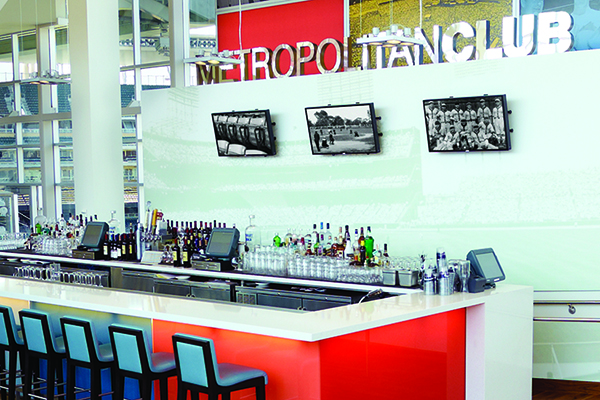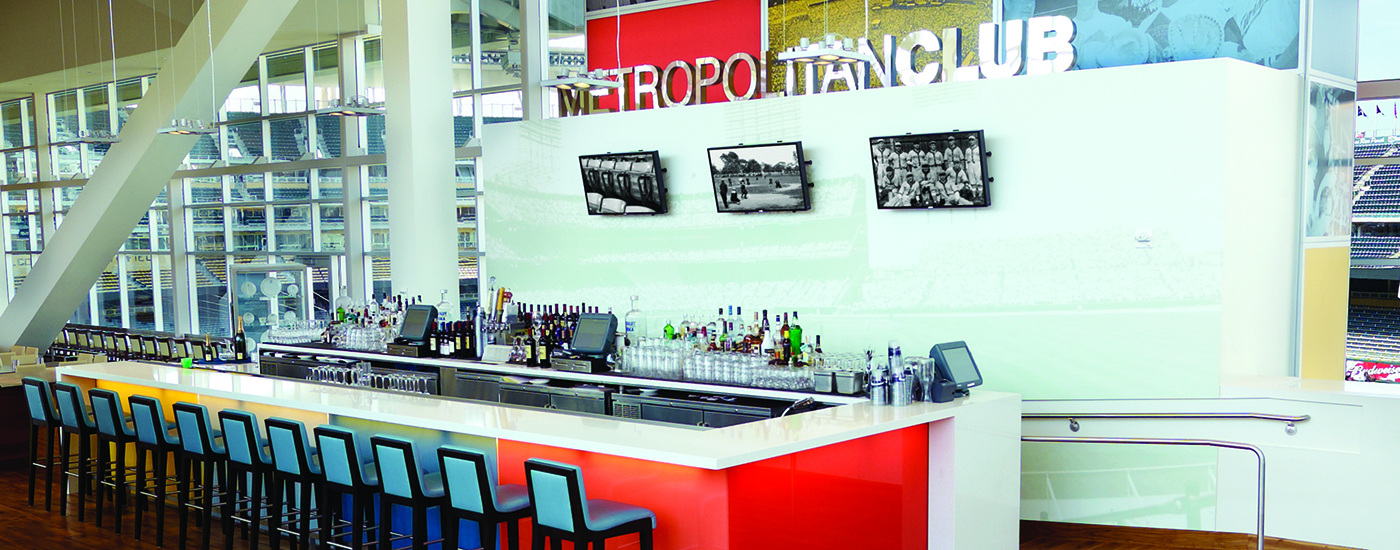Field of Screens
Since first opening its turnstiles to baseball fans in April 2010, Target Field has been providing the Minnesota Twins with a new open-air home right in the center of downtown
Minneapolis. Given a decidedly modern look by architectural firm Populous (formerly HOK Sport), the stadium was the beneficiary of an estimated $522 million budget that provided for the AV integration of more than 600 Insignia and SunBrite LCD monitors, all hung with the help of Chief mounting systems.
Spread throughout the facility in seating areas, concourses, mezzanines, lobby areas, suites, and offices, the 1080p, high-definition displays were deployed in sizes ranging from 32, 42, and 46-inch models on up to 60-inch units. Serving as visual reinforcement of the action on the field, as well as a source of digital messaging and advertising, the screens are part of an IPTV system managed by Cisco’s StadiumVision, an end-to-end video and digital content distribution network.
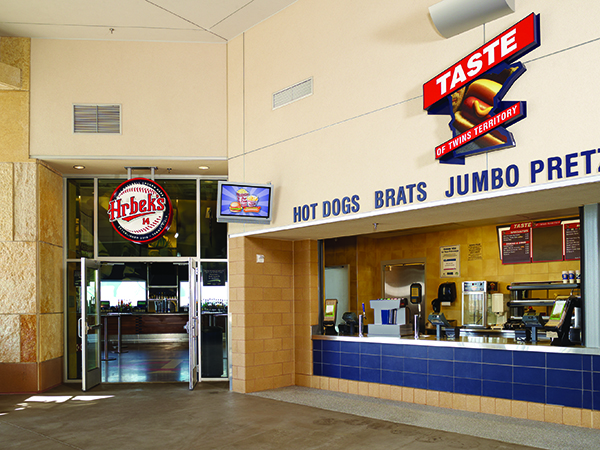
Occupying approximately one million square feet (a footprint smaller than most of today’s generation of new stadiums), Target Field nonetheless houses internal spaces similar in size to those found at larger facilities. Various twists and turns within the Populous design help make such a feat possible, but not without a price for AV integration.
“We didn’t always have walls aligning within 90 degrees of each other,” notes Paul Johnson, the man hired by the Twins front office as project manager for the systems build. “There are a lot of variations within the architecture of the stadium from place-to-place. When first giving consideration to how we were going to hang our video screens, it was apparent that we really needed to work with a manufacturer that had the flexibility to provide different mounting solutions for our many diverse applications.”
Operating from its headquarters in the southern Twin Cities metro area, Chief proved to be a hometown entity up to the task. Serving as the company’s point man on the project, regional sales manager Seth Baker worked with Johnson and a team including Target Field’s lead architect, general contractor Mortenson Construction, and Parsons Electric, a firm which counted AV systems integration among its duties.
“Walk-through meetings were a regular part of our schedule,” Baker recalls, “as were plan reviews, and the development of demo locations. When all was said and done, we had examined each of the 600+ display screen sites either up close in person or via the blueprints. Mount locations, drop distances, and wind and weather-related factors were all given careful review and consideration.”
Effectively dealing with the necessity of installing a Cisco digital media player (DMP) at each screen location received mindful attention as well.
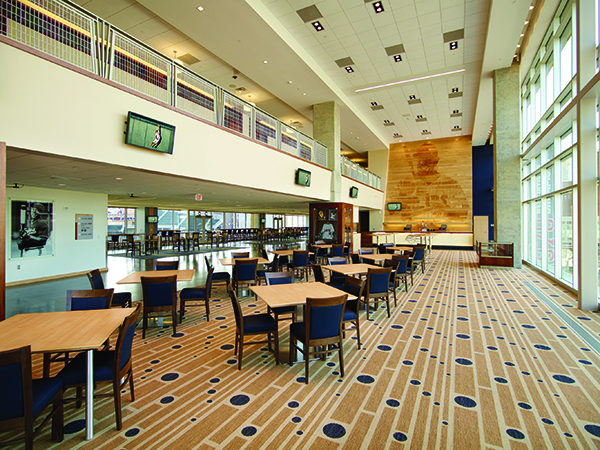
“Hiding the DMP units wasn’t the hardest part,” Johnson recounts. “Insuring that we still had access to them for maintenance purposes once the screens were installed was. Using the Chief mounts, we could adapt to the needs of each individual screen’s location. We used pull-out mounts in some places, tilting swing arm mounts in others, and fixed mounts where they made sense. Whatever the situation called for, with Chief we were adequately prepared to provide an immediate solution.”
Designed with just such needs in mind, the Chief products brought to the Target Field project included FUSION™ Series model LTAU and MTAU universal tilting wall mounts, JWD Series dual-swing arm wall mounts, MWR Series swing arm wall mounts, KWG Series height-adjustable, dual-arm wall mounts, and MCS Series ceiling mounts.
In 46 locations where wind was a factor, display screens hanging 22 feet above seating areas were installed using Chief CMA340 stabilization kits. Cable systems that attach to 1.5-inch extension columns, each kit includes a pole clamp, four 10-foot cables, and four turnbuckles that combine to deliver a weight capacity of 500 lbs. plus the added strength Target Field required to withstand the stiff, biting breezes that can blow through from time to time.
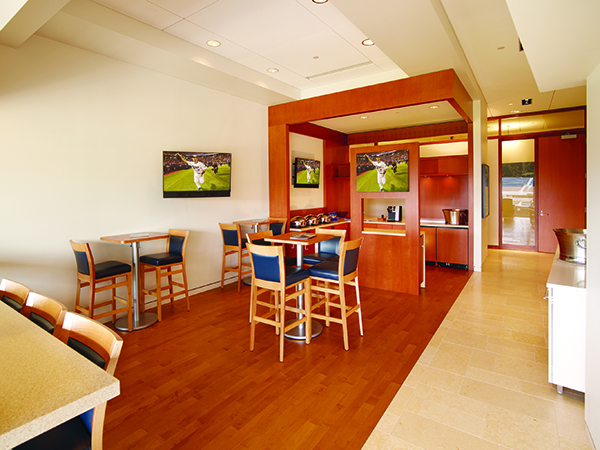
To lessen the possibilities of experiencing other weather-related woes, climate-controlled, stainless steel and glass enclosures also supplied by Chief were utilized to protect some displays located outdoors from the extremes of summer’s heat as well as early andlate season cold.
“On all levels, Target Field was built to survive under conditions of high use and hard abuse,” Johnson adds, summing up the philosophy that lent guidance to every aspect of the construction project. “We wanted to specify products everywhere that could withstand the test of time. I feel we got just that with Chief, plus the willingness of a manufacturer to step up and give us the support we needed.”
Heralded by many as one of the most advanced stadiums with a LEED Silver certification , Target Field wants to remain a place where the user-friendliness of its confines is the best that can be offered to both fans and the teams that play there. To this end, heated seats are a distinct possibility in the future, as is an antenna system that will create a cell repeater network capable of covering the entire stadium.
As for the distributed AV end of things, if Paul Johnson proves to be right, it will be many years—if not at least another 30-40—before anyone has to consider finding new ways to mount a flat-panel display screen.
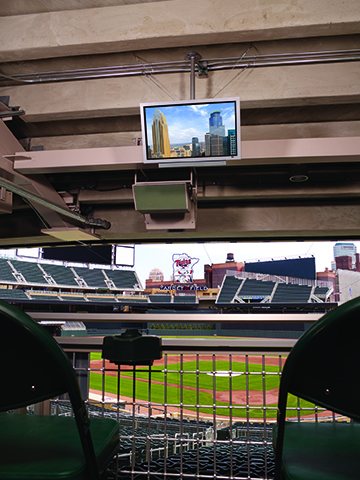
Related Inspiration
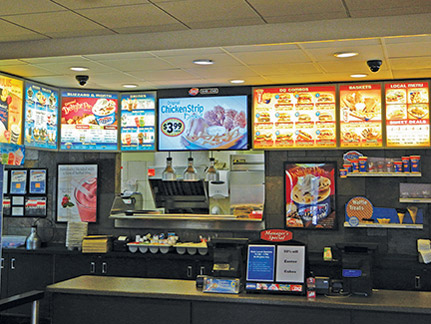 With 3,000 different Dairy Queen® location layouts, Chief’s variety of solutions are helpful in getting the signage placed precisely where it will be the most effective.
With 3,000 different Dairy Queen® location layouts, Chief’s variety of solutions are helpful in getting the signage placed precisely where it will be the most effective.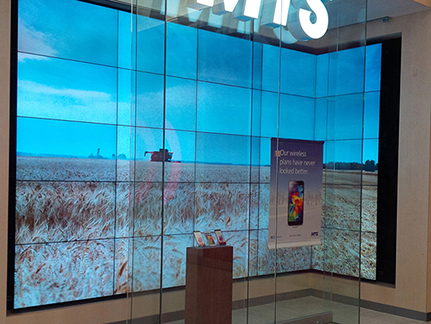 The ConnexSys Video Wall Mounting System made a complicated video wall installation with a short time frame possible for this cellular company's store.
The ConnexSys Video Wall Mounting System made a complicated video wall installation with a short time frame possible for this cellular company's store.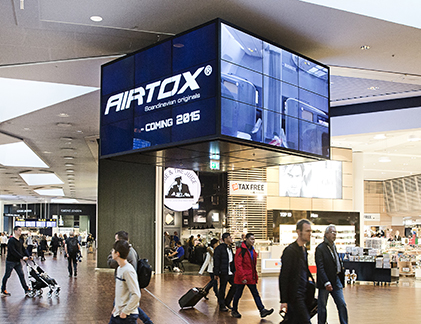 Installing 507 displays without interrupting operations is a big challenge.
Installing 507 displays without interrupting operations is a big challenge.

